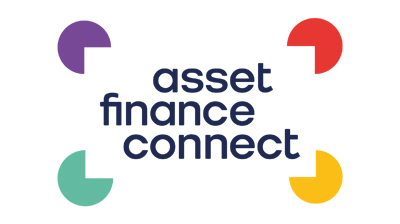In the US, Pawnee Leasing Corp. of Fort Collins, Colo., has specialized in leasing equipment to small, closely held companies since 1982. But last year Pawnee’s parent, Chesswood Group Limited of Toronto, with the support of Pawnee, cut a new path.
Chesswood started another firm to deliver a different product to Pawnee’s same market. Windset Capital Corp., based in Riverton, Utah, now provides small businesses throughout the US with working capital loans up to $125,000. These loans can be approved and funded, in some cases, in the same day.
“Entering that market in 2013 proved to be a larger opportunity than we expected,” says Gary Souverein, a director of both companies. “Alternative lending is becoming Main Street lending, particularly in small ticket, due to the departure of the banking community from this marketplace.”
In 35 words, Souverein has described one of the most important developments to occur in small-business lending since the Great Recession.
Banks are shying away from lending to small businesses—not because they want to but because it’s tough to carve out a profit when they do. As a result, the working capital space has opened up significantly to non-banks in the past two to three years
Brad Peterson, founder and managing partner of Channel Partners, LLC, in Maple Grove, Minn., gives details.
He said: “In today’s environment, it’s difficult for banks to lend to small businesses. The cost of processing a transaction, the higher risk profile of small businesses and the difficulty of assessing creditworthiness result in banks looking for borrowers with a minimum of $2 million in annual revenues that want to borrow more than $150,000 to $250,000—and they want the transactions secured.”
For banks to lend less in the face of regulatory compliance costs “is just not efficient or profitable,” Peterson says, “[so] small businesses look for financing alternatives.”
But most businesses in the US are small.
A survey conducted by the information firm BusinessKnowHow of Bohemia, NY, found that just 4% of small companies generated revenues of $1 million or more in 2012. Yet research reveals that these companies need working capital as much as they need equipment.
A 2013 study by the National Federation of Independent Businesses in Nashville found that 57% of businesses applied for some form of financing last year. A subsequent survey by Sageworks, a Raleigh, N.C.–based financial information firm, found that of that 57%, more than half (56%) were looking for working capital. “The point is, when you’re talking to customers about an equipment deal, you should also be asking them if they need working capital,” says Peterson.
Uncovering the need
David Gilbert, CEO of National Funding, an independent finance firm in San Diego, works with small-business owners almost daily.
“Some come in looking only for an equipment lease, and others look for equipment financing and an additional working capital loan to support equipment installation, transportation and other soft costs,” he says. “We have other customers with equipment needs who are looking for a non-traditional way to pay for those needs, and who do not want a lease. And then we have others who want an equipment lease but don’t have the credit quality for a lease, and we migrate them over to a working capital loan.”
The biggest challenge, Gilbert says, is in not confusing the customer. He explained: “We’re spending more time with them to understand their needs and the purpose of the equipment. They may have a nine-month project they need the equipment for, so they don’t need a 60-month obligation. We want to uncover the true need.”

Matching loan maturity to a small company’s business need is more important than ever, says Ben Gold, president of Quick Bridge Funding (pictured), an Orange, Calif.-based independent finance firm.
“When small businesses took dips in 2008 and 2009, many of their owners were still making payments on equipment they were no longer using,” he says. As a result, owners of these companies want short-term financing, and that’s what Quick Bridge Funding provides. “We’ll do deals of four months to one year, and one year is the longest we’ll do,” says Gold. “Our average duration is about seven-and-a-half months.”
Gold says small companies need working capital for a variety of reasons. A plumber might need to refurbish a trailer, buy supplies or purchase a piece of equipment rented regularly. An optical shop might realize a substantial discount on invoices if it pays quickly. Another business owner might want to buy out a partner, secure a bond or hire personnel for a recently awarded project.
Once a small business receives a loan for working capital, Souverein says the owner is likely to apply for such a loan again.
“Studies show that businesses are much more likely on a recurring basis to require working capital than they are to acquire a single piece of equipment during a given time,” he says. “Any candidate who comes in the door for equipment leasing is also likely to be a candidate for working capital.”
Proper provisioning
The challenge can be arriving at the appropriate amount to lend.
Gold adds: “We source new business from broker partners, so we don’t always have visibility to the exact needs of the borrowers. On all new submissions, we require the most recent six months of bank statements, prior to funding. We want to know the current picture of the customer’s cash flow, in an attempt to best tailor our product as carefully as possible.”
A landscaping company may need capital to winterize equipment at the end of fall, while a snow-plowing firm may need money during the summer to maintain its fleet. A health club may need more space or workout equipment to cover the New Year’s resolution crowd.
“The fourth quarter is a good time for companies to expand,” says Gold. “They may need to take on additional write-offs prior to the year ending, or they may have been putting off an important project all year and are now ready to pull the trigger. This is a perfect time for initiating a conversation about tax help, which can lead to talking about projects they’ve wanted to do all year.”
Prime customers are “coming back, re-engaging and ready to grow,” says Gilbert. But they may not know working capital is available from equipment finance firms because the product is still new.
“It will take time for customers to realize these products exist,” Gilbert says. “But small business owners don’t have a lot of other options. To have alternative lending available now is considered a blessing—we have a 95% customer satisfaction rate.”
Channel Partners’ Peterson says alternative capital becomes a more accepted product each year. “It really has become much more mainstream than it was five years ago,” he says. “The product began in the late ’90s as retail-oriented financing tied to credit-card processing. But today we fund more B2B businesses like construction, manufacturing and transportation than any other types.”
Most of the companies Channel Partners does business with are A or B credits seeking $25,000 to $150,000 to complete a specific project.
“They may need money to pay the up-front costs of a new construction contract where the uses, cost and increased revenue are easily evaluated,” Peterson says. “For equipment finance companies looking to grow their business, working capital loans are a compelling option that can further link them to the financing needs of their leasing customers and prospects.”
But Peterson adds a word of caution: “We say, ‘never leave fish to find fish,’ meaning don’t lose focus on your core leasing business to add working capital. Leasing companies should be very deliberate in evaluating opportunity, expectations and implementation options when adding a working capital alternative. The market offers a lot of options today.”
Planning an approach
One reason for caution may be the continuing restraint of small-business owners. “Memories of the recession are still vivid and close to home for many of these customers because their personal lives are so intertwined with their companies,” Souverein says. “They seem to be taking more action than a couple of years ago, but they’re still very prudent in their decisions.”
Ben Gold agrees. “I wouldn’t say business owners are more risk-averse than they were in 2008, but I would say they’re more cognizant now of putting themselves into a financial product that could potentially create a financial burden for them years down the road,” he says.
The trend works in Quick Bridge Funding’s favor, because every working-capital loan it provides is short term.
“In an effort to be compelling, we’ve been able to shorten the sales cycle,” says Gold. “I came from equipment leasing, where approvals were good for three months. A Quick Bridge approval is only good for one month, and deals typically start and finish in the same week. We want to engage with the broker or the customer as quickly as possible to get the deal done.” Efficiency and speed are key, Gold says, “because if it gets difficult for customers, they may not want to pursue this kind of financing.”
Gilbert, on the other hand, believes small-business owners are more debt-averse since the recession. “In the past, they would take on long-term debt, for 60 months,” he says. “But now some are opting out of leases and taking a six-month loan so they won’t have a long-term obligation. It’s very different from the last time around.”
Click and close
Also different now: technology. Quick Bridge Funding uses its own underwriting algorithms and data for making lending decisions, but the company also partners with large credit vendors to obtain more information. “Data is critical because of our short-term loans and the number of customers we see,” says Gold. “Deals have to fund quickly and correctly, so it’s important that we use technology to meet the needs of our customers, our brokers and ourselves.”
Karen Mills of Harvard Business School supports Gold’s observation. In a September posting on Forbes.com, she wrote, “Simplicity and convenience of the application process and speed of delivery of capital are helping the working capital market grow. All of the biggest players emerging in the alternative lending space offer online and mobile applications, many of which can be completed in under 30 minutes.
These are not just inquiries; these are actual loan agreements. This compares to the average of about 25 hours that small businesses spend on filling out paperwork at an average of three conventional banks before securing some form of credit, according to the Federal Reserve Bank of New York’s Fall 2013 Small Business Credit Survey.”
Upon filling out an online application, business owners typically can be approved in hours and have the money in their account in just days, Mills observes, “whereas in the conventional banking model, small-business owners may not be approved for several weeks.”
For an idea of how fast the alternative lending space is growing, check out On- Deck, an online lender founded in 2007 that makes loans of up to $250,000 to small businesses. The company reported revenues for 2013 of $65 million, up 2.5 times from 2012. In a press release, OnDeck CEO Noah Breslow said the company received four times as many loan requests from residential construction contractors in 2013, compared with the year before.
Peterson of Channel Partners says more small businesses today are focused on a project, ready to invest in that project and know how much revenue the completed project will generate. “They’re telling us they need $50,000 to buy inventory that will expand their revenue,” he says. “Or they say they need money to build a patio that will add space to their restaurant—and they know how much revenue it will add.” ¦
Susan Hodges writes about equipment finance and other business topics from her office in Evanston, Ill.
This article appears with the kind permission of the US Equipment Leasing and Finance Association








